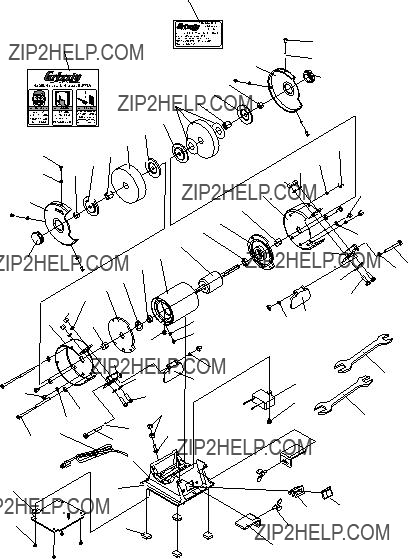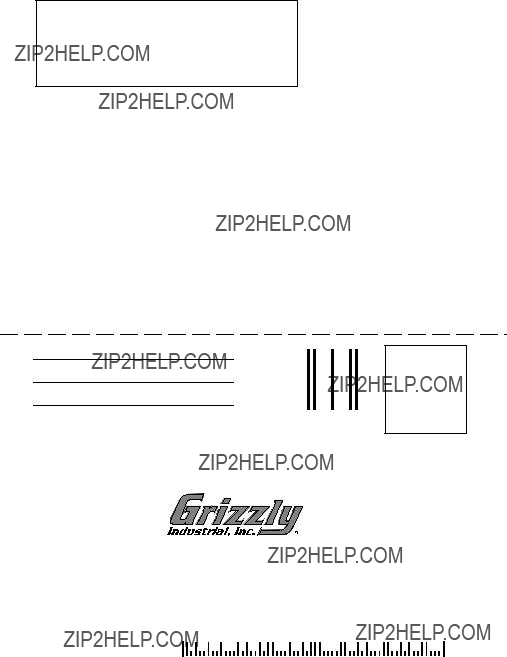Model H7757
3" MINI WOOL BUFFER
OWNER'S MANUAL
COPYRIGHT ?? DECEMBER, 2005 BY GRIZZLY INDUSTRIAL, INC.
WARNING: NO PORTION OF THIS MANUAL MAY BE REPRODUCED IN ANY SHAPE
OR FORM WITHOUT THE WRITTEN APPROVAL OF GRIZZLY INDUSTRIAL, INC.
#JK7772 PRINTED IN CHINA
SECTION 1: SAFETY
For Your Own Safety Read Instruction Manual
Before Operating This Equipment
The purpose of safety symbols is to attract your attention to possible hazard- ous conditions. This manual uses a series of symbols and signal words which are intended to convey the level of importance of the safety messages. The progression of symbols is described below. Remember that safety messages by themselves do not eliminate danger and are not a substitute for proper accident prevention measures.
Indicates an imminently hazardous situation which, if not avoided, WILL result in death or serious injury.
Safety Instructions for Machinery
1.READ THROUGH THE ENTIRE
MANUAL BEFORE STARTING MACHINERY. Machinery presents serious injury hazards to untrained users.
2.ALWAYS USE ANSI APPROVED
SAFETY GLASSES WHEN
OPERATING MACHINERY.
Everyday eyeglasses only have impact resistant lenses, they are NOT safety glasses.
3.ALWAYS WEAR AN ANSI
APPROVED RESPIRATOR WHEN
OPERATING MACHINERY THAT PRODUCES DUST. Wood dust is a carcinogen and can cause cancer and severe respiratory illnesses.
4.ALWAYS USE HEARING
PROTECTIONWHENOPERATING MACHINERY. Machinery noise can cause permanent hearing damage.
5.WEAR PROPER APPAREL. DO
NOT wear loose clothing, gloves, neckties, rings, or jewelry which may get caught in moving parts. Wear protective hair covering to contain long hair and wear non-slip footwear.
6.NEVER OPERATE MACHINERY
WHEN TIRED, OR UNDER THE
INFLUENCE OF DRUGS OR ALCOHOL. Be mentally alert at all times when running machinery.
Safety Instructions for the 3" Mini Wool Buffer
1.EYE PROTECTION. Grinding causes small particles to become airborne at a high rate of speed. ALWAYS wear safety glasses when using this machine.
2.MOUNTING TO BENCH/STAND.
An unsecured grinder may become dangerously out of control during operation. Make sure grinder is FIRMLY secured to a bench/stand before use.
3.WHEEL SPEED RATING.
Grinding wheels operated at a faster speed than rated for may break or fly apart. Before mounting a new wheel, be sure the wheel RPM rating is equal or higher than the speed of the buffer.
4.WHEEL FLANGES. Only use the flanges included with the buffer when mounting wheels. Other flanges may not properly secure the wheel and cause an accident.
6.STARTING BUFFER. If a grinding wheel is damaged, it will usually fly apart shortly after start-up. To protect yourself, always stand to the side of the buffer when turning it ON and allow it to gain full speed before standing in front of it.
7.LUNG PROTECTION. Grinding produces hazardous dust, which may cause long-term respiratory problems if breathed. Always wear a NIOSH approved dust mask or respirator when grinding.
8.SIDE GRINDING. Grinding on the side of wheels can cause them to break and fly apart???unless the wheel is rated for side grinding.
9.TOP GRINDING. Grinding on the top of wheels greatly increases the risk of workpiece kickback. Always grind on the downward part of the wheel.
10.HAND TO WHEEL CONTACT.
Grinding wheels can remove a lot of skin quickly. Keep a firm grip on the workpiece and position your hands a safe distance away when grinding. Avoid wearing gloves as they may get caught in the grinding wheel and cause serious entangle- ment injuries.
11.TOOL REST POSITION. If the tool rest is too far away from the wheel, the workpiece may be pulled down, causing loss of control and pulling your hand into the grinding wheel. Keep the tool rest within 1???8" from the wheel when operating.
12.CRACKED WHEEL. Cracked wheels may break and fly apart during operation. Replace cracked wheels immediately!

We are proud to offer the Grizzly Model H7757 3" Mini Wool Buffer. This Model is part of a growing Grizzly family of fine power tools. When used according to the guidelines set forth in this manual, you can expect years of trouble-free, enjoyable operation and proof of Grizzly???s commit- ment to customer satisfaction.
It is our pleasure to provide this manual with the Model H7757. It was written to encourage safety considerations and guide you through general operating pro- cedures and maintenance.
The specifications, details, and photo- graphs in this manual represent the Model H7757 as supplied when the manual was prepared. However, owing to Grizzly???s pol- icy of continuous improvement, changes may be made at any time with no obliga- tion on the part of Grizzly.
If you have any comments regarding this manual, please write to us at the following address:
Grizzly Industrial, Inc.
C/O Technical Documentation
P.O. Box 2069
Bellingham, WA 98227-2069
Most importantly, we stand behind our tools. If you have any service questions or parts requests, please call or write us at the location listed below.
Grizzly Industrial, Inc.
1203 Lycoming Mall Circle
Muncy, PA 17756
Phone: (570) 546-9663
Fax: (800) 438-5901 E-Mail: techsupport@grizzly.com
Web Site: http://www.grizzly.com
Read the manual before operation. Become familiar with this machine, its safety instructions, and its operation before beginning any work. Serious personal injury may result if safety or operational information is not under- stood or followed.
Your mini wool buffer left our warehouse in a carefully packed box. If you discover the mini wool buffer is damaged after you have signed for delivery, please immediately call Customer Service at (570) 546-9663 for advice.
Save the containers and all packing materi- als for possible inspection by the carrier or its agent. Otherwise, filing a freight claim can be difficult.
When you are completely satisfied with the condition of the shipment, you should inventory the equipment.
After you have unpacked the carton you should ???nd the following.
A
D
Figure 1. Model H7757 inventory
NEVER assemble a grinding wheel on the arbor without paper or fiber discs between the wheel and the flanges. Failure to include the paper or fiber discs can result in damage to the wheel and cause it to fail when at speed, causing serious injury!
6.Re-install the guards and shields.
7.Run a new wheel for at least one min- ute while standing clear of the line of rotation. If a wheel does have defects it will generally fail as soon as it gets up to full speed.

WARRANTY AND RETURNS
Grizzly Industrial, Inc. warrants every product it sells for a period of 1 year to the original purchaser from the date of purchase. This warranty does not apply to defects due directly or indirectly to misuse, abuse, negligence, accidents, repairs or alterations or lack of maintenance. This is Grizzly???s sole written warranty and any and all warranties that may be implied by law, including any merchantability or fitness, for any particular purpose, are hereby limited to the duration of this written warranty. We do not warrant or represent that the merchandise complies with the provisions of any law or acts unless the manufacturer so warrants. In no event shall Grizzly???s liability under this warranty exceed the purchase price paid for the product and any legal actions brought against Grizzly shall be tried in the State of Washington, County of Whatcom.
We shall in no event be liable for death, injuries to persons or property or for incidental, contingent, special, or consequential damages arising from the use of our products.
To take advantage of this warranty, contact us by mail or phone and give us all the details. We will then issue you a ???Return Authorization Number,??? which must be clearly posted on the outside as well as the inside of the carton. We will not accept any item back without this number. Proof of purchase must accompany the merchandise.
The manufacturers reserve the right to change specifications at any time because they constantly strive to achieve better quality equipment. We make every effort to ensure that our products meet high quality and durability standards and we hope you never need to use this warranty.
Please feel free to write or call us if you have any questions about the machine or the manual.
Grizzly Industrial, Inc.
1203 Lycoming Mall Circle
Muncy, PA 17756
Phone: (570) 546-9663
Fax: (800) 438-5901
E-Mail: techsupport@grizzly.com
Web Site: http://www.grizzly.com
Thank you again for your business and continued support. We hope to serve you again soon!
WARRANTY CARD
Name_________________________________________________________________
Street_________________________________________________________________
City _______________________ State_________________________ Zip _________
Phone #____________________ Email ________________________ Invoice #_____
Model # ____________________ Order # _______________________ Serial #______
The following information is given on a voluntary basis. It will be used for marketing purposes to help us develop better products and services. All information is strictly confidential.
1.How did you learn about us?
2.Which of the following magazines do you subscribe to?
3.What is your annual household income?
4.What is your age group?
5.How long have you been a woodworker/metalworker?
6.How many of your machines or tools are Grizzly?
9.Would you allow us to use your name as a reference for our customers in your area?
10. Comments: _________________________________________________________
______________________________________________________________________
______________________________________________________________________
______________________________________________________________________
Send a Grizzly Catalog to a friend:
Name________________________________
Street________________________________
City______________State______Zip_______
FOLD ALONG DOTTED LINE
Place
Stamp
Here
GRIZZLY INDUSTRIAL, INC.
P.O. BOX 2069
BELLINGHAM, WA 98227-2069
TAPE ALONG EDGES--PLEASE DO NOT STAPLE

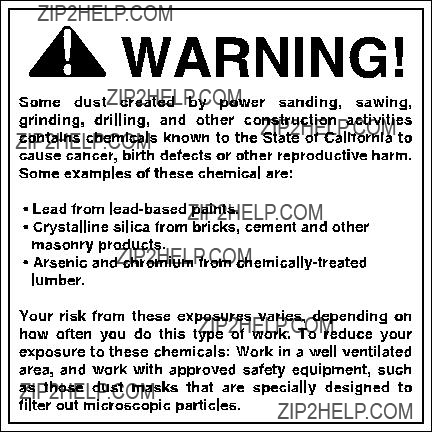
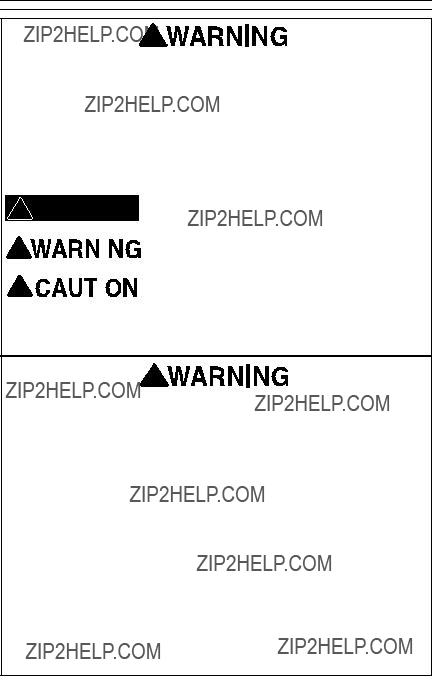

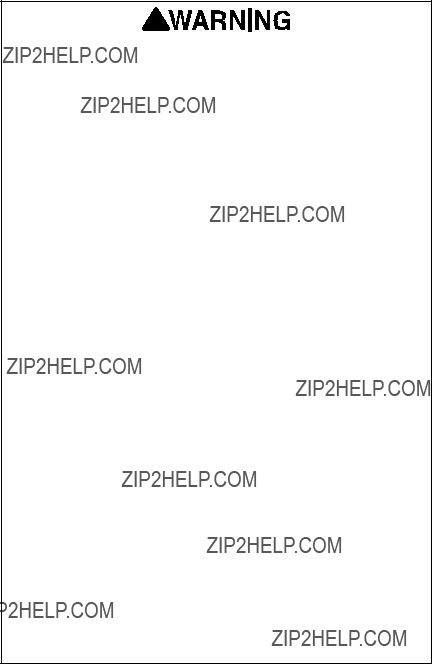

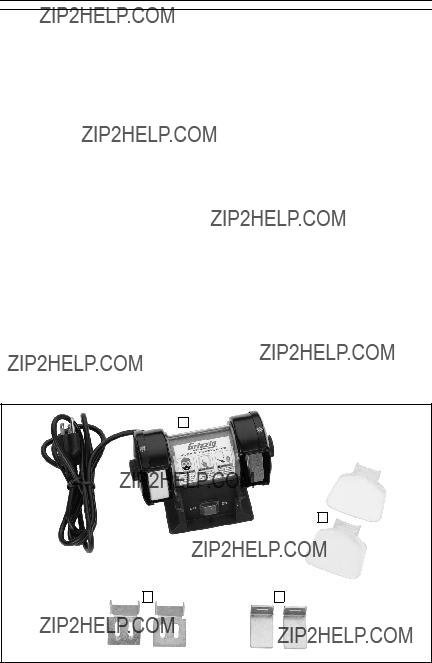
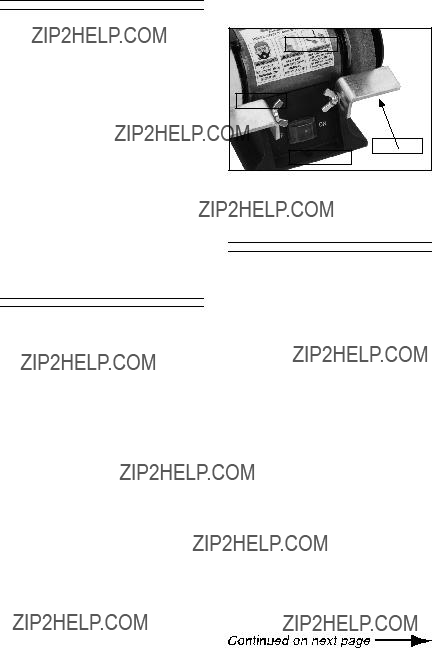

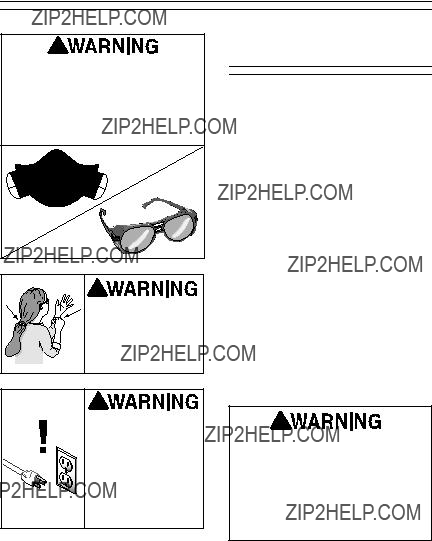

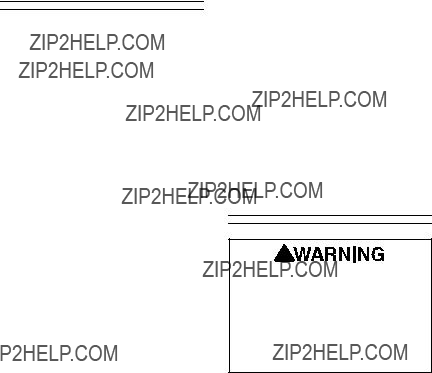
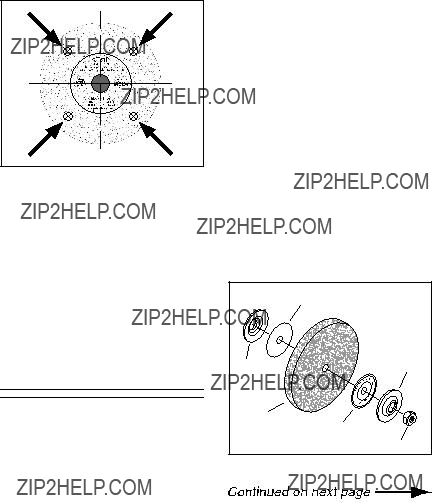
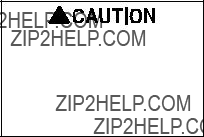


 H0736
H0736

